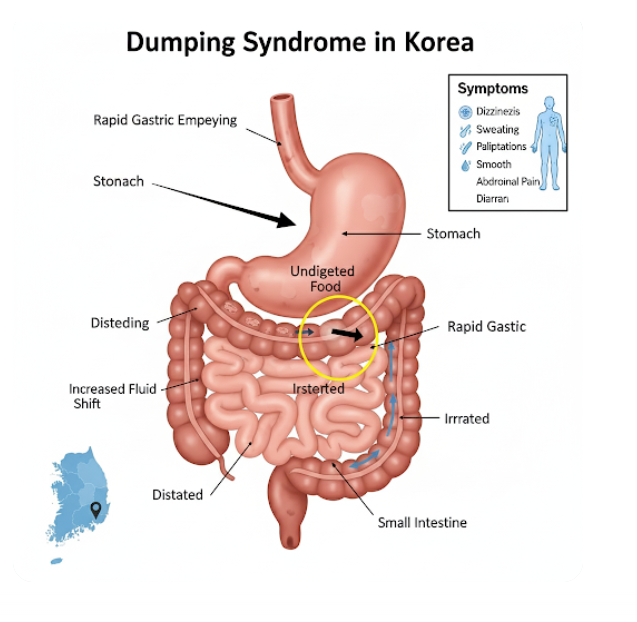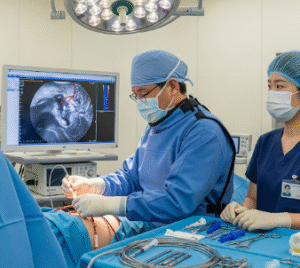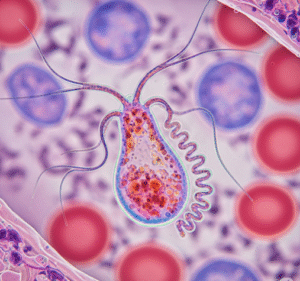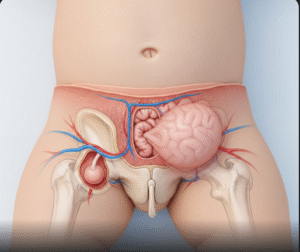Overview
Dumping Syndrome is a digestive disorder that occurs when food, especially sugar, moves too quickly from the stomach into the small intestine. In South Korea, it is commonly observed in patients who have undergone gastric surgery, including bariatric procedures or partial gastrectomy for ulcers or cancer. Early recognition and dietary management are key to preventing complications and improving quality of life.
What is Dumping Syndrome?
Dumping Syndrome is classified into early and late forms:
- Early dumping occurs 10–30 minutes after eating and is caused by rapid gastric emptying.
- Late dumping occurs 1–3 hours after eating and is usually associated with reactive hypoglycemia.
It affects individuals of all ages who have had stomach surgery or anatomical alterations that affect gastric emptying.
Symptoms
Symptoms vary depending on the type of dumping but commonly include:
- Nausea and vomiting
- Abdominal cramps and bloating
- Diarrhea
- Sweating and flushing
- Dizziness or lightheadedness
- Rapid heartbeat (tachycardia)
- Weakness or fatigue
- Low blood sugar episodes in late dumping
Causes
The primary causes of Dumping Syndrome include:
- Surgical removal or alteration of the stomach (gastrectomy, gastric bypass)
- Loss of normal pyloric function, which regulates the passage of food
- Rapid movement of hyperosmolar food into the small intestine
- Changes in gut hormone responses after surgery
Risk Factors
Factors that increase susceptibility include:
- History of gastric or esophageal surgery
- Bariatric surgery for obesity
- Diabetes mellitus affecting gastric motility
- Rapid consumption of high-sugar or high-carbohydrate meals
Complications
If untreated, Dumping Syndrome may lead to:
- Malnutrition and vitamin deficiencies
- Chronic diarrhea and dehydration
- Weight loss and poor nutrient absorption
- Hypoglycemia-related symptoms such as fainting or confusion
Prevention
Preventive measures for Dumping Syndrome include:
- Eating smaller, frequent meals
- Avoiding foods high in simple sugars
- Consuming protein- and fiber-rich foods
- Lying down briefly after meals to slow gastric emptying
- Monitoring blood sugar levels in diabetic patients
Treatment Options in Korea
Treatment in South Korea focuses on dietary modifications, medication, and sometimes surgical intervention:
Dietary Management:
- Fractional meals (small, frequent meals)
- Limiting liquid intake during meals to reduce rapid gastric emptying
- Avoiding sugary foods and drinks
- Incorporating complex carbohydrates, fiber, and protein
Medical Management:
- Medications to slow gastric emptying or reduce gastrointestinal motility
- Octreotide injections in severe cases to manage symptoms and hormone release
Surgical Intervention:
- Revisional surgery may be considered in rare, severe, or refractory cases
Specialized Care:
- Gastroenterology departments in Korean hospitals provide tailored nutritional and medical support
- Multidisciplinary care for post-gastric surgery patients, including dietitians and endocrinologists, ensures optimal management
With proper dietary adjustments, monitoring, and medical care, patients with Dumping Syndrome in Korea can manage symptoms effectively and maintain good nutritional status.













